Sultan air guards. The first steps of the Ottoman military aviation
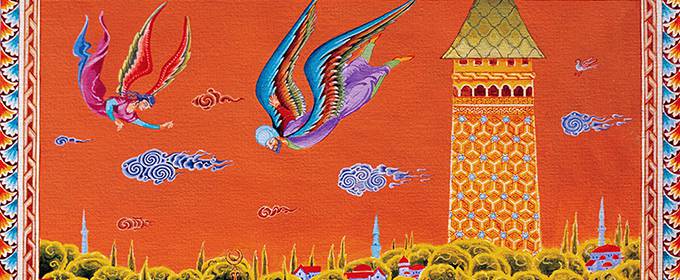
Turkish scientist Hezarfen Ahmed Celebi (1609-1640), who lived in Istanbul, built an aircraft from several wings that were supposed to be attached to the body in 1632. According to the famous Ottoman historian and traveler Evliya Celebi, Hezaphren Ahmed put this apparatus on, jumped from the top of the Galata Tower in Istanbul and flew over the Bosphorus Strait. He landed on Doganjilar Square, breaking on his wings, thus, about three kilometers. The secret of Khezafren’s experience was that the height of the tower, also located on a high hill, allowed him to fly over the strait. In those old times, the fate of Khezfren was sad. Sultan Murad IV first awarded the brave young man with gold, but then, under the influence of advisers from among the clergy, who feared the presence of such a free-thinker in the capital, ordered to send Khezafren to Algeria, where he died in 1640 at the age of thirty years.

Hezafren Ahmed Chelebi had a brother, Lagari Hasan Chelebi - also an inventor and tester. In 1633, he built a cone-shaped rocket, 7 long, in elbows (about 3,6 meters), which he attached to himself. With the help of a cannon, the rocket was launched into the air and flew 300 meters along with Lagari. The tester landed on the water thanks to attached homemade wings. He managed to stay in the air for about 20 seconds. Like Khezafren, the sultan awarded Lagari with gold and enlisted in the army, but then changed mercy to discontent and banished the brave guy to the Crimean Khanate, where his tracks are lost.
Despite the fact that by the beginning of the twentieth century, the Ottoman Empire had lost a significant part of its possessions in North Africa and the Balkans, it remained the strongest state in the Middle East and still claimed an active role in Mediterranean, Middle Eastern and Eastern European politics. The Ottoman authorities closely followed the development of military affairs in Europe and sought to modernize their own armed forces as much as possible. The development of aviation also could not remain without their attention.
2 December 1909 The famous pilots Louis Bleriot and Pierre de Caters conducted the first demonstration flight in the Ottoman Empire. What he saw impressed members of the Sultan government, who decided to start building Ottoman military aviation. The development of a military aviation program was started, for which at the end of 1910, several young people were sent to Europe to undergo flight training. However, soon the cadets were forced to return home - despite the desire of the Sultan government to equip the Ottoman army with their own aviation, insufficient funding did not allow the young Turks to study in Europe. In the spring of 1911, the unlearned cadets returned to the Ottoman Empire.
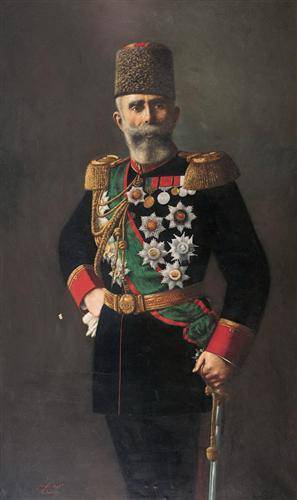 But, despite the first failure, the Ottoman military ministry did not lose hope of creating its own aviation in the country. An ardent supporter of the formation of the national air force was the War Minister of the Ottoman Empire, General Mahmud Shevket Pasha (1856-1913). A native of Baghdad, he was of Chechen descent. His ancestors, people from the eastern part of Chechnya, moved first to Tiflis, and then left for Iraq, which at that time was part of the Ottoman Empire, where they were in military service. Mahmud Shevket-Pasha was a smart and educated man - he graduated from the Istanbul Military Academy in 1882, then continued his military education in France, was part of the commission for the procurement of weapons in Germany. In 1899, he was promoted to brigadier general, and in 1905, he became governor of Kosovo. In 1908, he commanded the 3 Army stationed in Thessaloniki, and in 1910, he was appointed Minister of War of the Ottoman Empire, while remaining the Inspector General of the 1, 2 and 3 of the Ottoman armies.
But, despite the first failure, the Ottoman military ministry did not lose hope of creating its own aviation in the country. An ardent supporter of the formation of the national air force was the War Minister of the Ottoman Empire, General Mahmud Shevket Pasha (1856-1913). A native of Baghdad, he was of Chechen descent. His ancestors, people from the eastern part of Chechnya, moved first to Tiflis, and then left for Iraq, which at that time was part of the Ottoman Empire, where they were in military service. Mahmud Shevket-Pasha was a smart and educated man - he graduated from the Istanbul Military Academy in 1882, then continued his military education in France, was part of the commission for the procurement of weapons in Germany. In 1899, he was promoted to brigadier general, and in 1905, he became governor of Kosovo. In 1908, he commanded the 3 Army stationed in Thessaloniki, and in 1910, he was appointed Minister of War of the Ottoman Empire, while remaining the Inspector General of the 1, 2 and 3 of the Ottoman armies. As Minister, Shevket Pasha continued his policy of modernizing the country's armed forces, including actively supporting the national military aviation program. It was decided to repeat the sending of cadets to Europe. The military units were sent invitations to all interested officers to take part in the competition. Two officers were to be sent to Europe - French-speaking, with good knowledge and relatively light weight. According to the results of the 28 exam on June 1911, the best were selected - captain of the cavalry Mehmet Fez and engineer lieutenant Yusuf Kenan. Captain Mehmet Fez was sent to study in France, and Lieutenant Yusuf Kenan was supposed to learn to pilot in Germany. But since the German aviation school requested too high tuition fees, the command decided to send both officers to France. In July, 1911 began their studies at the famous Louis Bleriot School in Etampes, in the vicinity of Paris.
At the end of 1911, Minister Shevket Pasha ordered the creation of a department for the development of military aviation in the structure of the General Staff of the Ottoman army, which was soon incorporated into the Inspectorate of technical units and fortified areas. Lieutenant Colonel Surey Ilmen (1874-1955), who had served in the second division of the General Staff, was appointed head of the department. The department included the head of the scientific department, Lieutenant Colonel of the Engineering Troops Refik, the Major of the Engineering Troops Mehmet Ali and Major Zeki. Of course, both Lieutenant Colonel Sureyya (in the photo) and his subordinate officers knew little about aviation and the aviation service, so they had to start their activities by increasing their own knowledge.
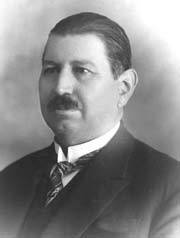 To this end, the Turkish General Staff ordered the Turkish military attaches in Paris, Berlin and Vienna to send literature on the subject of military aviation. After reading the literature, Lieutenant Colonel Sureyya came to the conclusion that it was necessary to organize in the Ottoman Empire his own military aviation school, in which not two officers could study, as in an expensive European school, but a much larger number of cadets. However, the idea of creating your own aviation school required significant financial costs, primarily for the purchase of airplanes and balloons, the construction of hangars, the test site. Aviation School planned to open in Istanbul. According to the plans of the military command, the school should have been trained 50-60 officers, in addition, Istanbul was not going to give up the practice of training officers abroad.
To this end, the Turkish General Staff ordered the Turkish military attaches in Paris, Berlin and Vienna to send literature on the subject of military aviation. After reading the literature, Lieutenant Colonel Sureyya came to the conclusion that it was necessary to organize in the Ottoman Empire his own military aviation school, in which not two officers could study, as in an expensive European school, but a much larger number of cadets. However, the idea of creating your own aviation school required significant financial costs, primarily for the purchase of airplanes and balloons, the construction of hangars, the test site. Aviation School planned to open in Istanbul. According to the plans of the military command, the school should have been trained 50-60 officers, in addition, Istanbul was not going to give up the practice of training officers abroad. 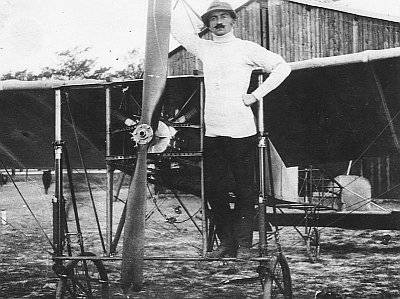 In the spring of 1912, construction began on two tent hangars for an aviation school in the village of Yesilkoy. Meanwhile, 21 in February 1912, Captain Mehmet Fez (pictured) and Lieutenant Yusuf Kenan completed a course in the Blerio aviation school and returned to their homeland. 15 March 1912 delivered two Deperdussin aircraft purchased in Europe to Istanbul - one two-seater and one single-seater, which was planned to be used for training purposes. The pilots of the aircraft were appointed captain Mehmet Fez and Lieutenant Yusuf Kenan, trained in the French aviation school. 27 On April 1912, they flew over Istanbul, demonstrating to the command their aircraft management skills they had gained in France.
In the spring of 1912, construction began on two tent hangars for an aviation school in the village of Yesilkoy. Meanwhile, 21 in February 1912, Captain Mehmet Fez (pictured) and Lieutenant Yusuf Kenan completed a course in the Blerio aviation school and returned to their homeland. 15 March 1912 delivered two Deperdussin aircraft purchased in Europe to Istanbul - one two-seater and one single-seater, which was planned to be used for training purposes. The pilots of the aircraft were appointed captain Mehmet Fez and Lieutenant Yusuf Kenan, trained in the French aviation school. 27 On April 1912, they flew over Istanbul, demonstrating to the command their aircraft management skills they had gained in France. In May 1912 officers of the Ottoman army were sent to France to study aviation business in France. They were the captain of the infantry Celal, the captain of the infantry Refik, the captain of the infantry, Feyzi, the captain of the artillery Salim, the lieutenant Nuri, the lieutenant Mitat, the lieutenant engineer Salim and the lieutenant of the Sukru cavalry.
In addition to the training of aviators, who was responsible for the creation of Turkish military aviation, Lieutenant Colonel Sureyya also stressed the need to start creating aviation units in the army. According to the lieutenant colonel, at first it was necessary to form aviation companies of central subordination, and then to form new aviation companies on the basis of one aviation company per army corps. For easier perception of the structure of aviation by Ottoman army officers, Sureyya proposed to leave the traditional company-platoon division in aviation. There should have been two platoons in the company, and two planes in each platoon. The number of personnel of the aviation company - 34 man, including the company commander in the rank of captain, 4 pilot in lieutenant ranks, 1 mechanics - noncommissioned officer and 2 privates for each 2 vehicles the company’s transport support is a total of 6 people, 12 rides to a horse with a waterborne vehicle, 1 rank and file for servicing 4 vehicles carrying small loads. Thus, the company was supposed to have 2 aircraft and 4 cars.
September 25 The Ottoman Military Aviation School, 1912, began training officers for the needs of the country's military aviation. This is how the first educational institution appeared in Turkey, training specialists for the national air force. According to the directive of the Turkish General Staff, the school included: 1) school command, 2) instructor officers, 3) technical specialists, 4) guard unit, 5) workshops, 6) infirmary, 7) school equipment stores, 8) underground gas storage, 9) aircraft, 10) cars, 11) aircraft hangars, 12) airstrip. It was planned during the year to carry out three graduate pilots. The training course was three months, and the number of recruits - 10-12 officers. The training of non-commissioned officers and privates was decided to be carried out in aviation companies. The staffs of school management and provision were also clarified.
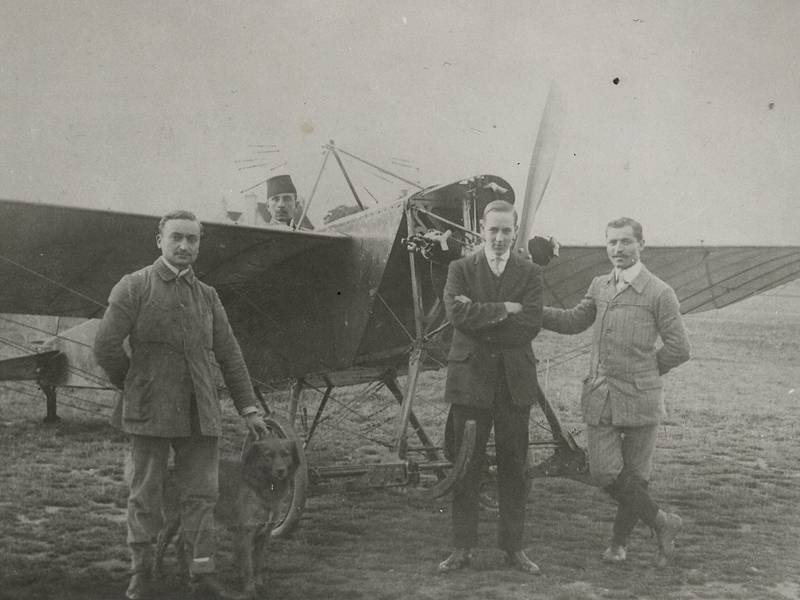
The following management staff relied on the school: 1 headmaster in the rank of major or colonel, 1 deputy headmaster - captain, 4 lecturer from junior lieutenant to captain with pilot qualification, 1 major doctor - 1 junior doctor - captain, 1 assistant the supervisor is the chief sergeant, the 1 secretary, the 1 clerk-sergeant, the 1 clerk - corporal, the 1 pharmacist, the nursing staff - the 1 corporal and the 3 privates. Technical units have been equipped with the following: 1 Head shops - Captain, 1 instructor - a second lieutenant, 1 sergeant, 1 the draftsman, 16 working - ordinary and 13 laborers - ordinary, 3 chefs - ordinary, 6 drivers - ordinary, 2 water carrier - the rank and file, 1 warehouse manager - lieutenant or captain, 1 assistant warehouse manager - junior lieutenant. The guard unit of the school corresponded to the platoon in size and had the following composition: 1 head of the security group - captain, 1 assistant head of the security group - lieutenant, 2 sergeant, 4 corporal and 40 privates.
The following full-time positions were created in the aviation company: 1 company commander - senior captain, pilot 4 - from lieutenant to captain, 1 doctor - captain, 1 apothecary - junior lieutenant, 1 senior archer - chief sergeant, 1 assistant sergeant, 4 gunner - sergeant, 4 corporal - mechanics, 1 paramedic - corporal, 1 carpenter - modular company, 1 saddler - corporal, 1 locksmith - corporal, 1 water carrier - ordinary, 1 horny - man, who I, o, o, 1 water carrier - an ordinary, 7 - horny - man, I, o, o, o workers and mechanics for maintenance I planes - privates, 30 drivers - privates, 24 drivers - sergeants and 2 drivers - corporals.
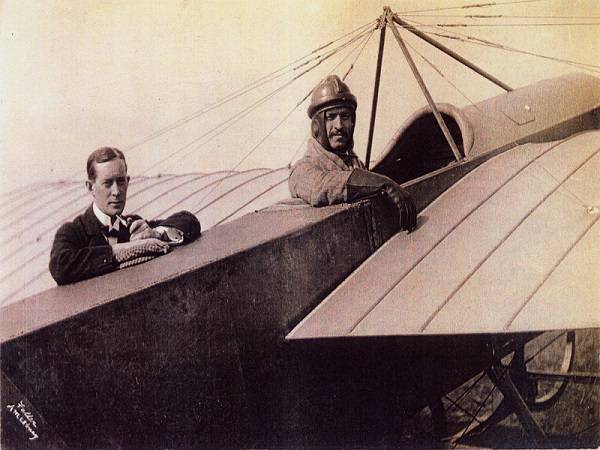
Thus, the 1912 year became the starting point in the history of the formation of Turkish military aviation. In the same year, the number of aircraft acquired by the Ottoman Empire in European countries was brought to 15 units. The first aircraft purchased for the needs of the Ottoman aircraft, as we have already mentioned above, were single and two-seat Deperdussin aircraft, delivered from France. Then Bleriot airplanes of various modifications were purchased - two two-seater XI-b planes, three two-seater XI-2 planes, and three Pingouin single-seat training planes. In addition, the Ottoman Empire acquired seven REP series aircraft. These aircraft were developed by the French aircraft designer Robert Hainault Peltry, one of the most famous aeronauts of the time. In 1910, Mr .. Eno-Peltri created his own aircraft manufacturer, but did not achieve significant commercial success. Selling seven aircraft to the Ottoman Empire became for him almost the main successful enterprise.
Talking about the first two years of the formation of the Turkish military aviation, it is impossible to ignore the one that unfolded just in 1911-1912. Italo-Turkish war. In October 1911, the Italian landing force landed in Tripolitania (Libya). For the first time in the history of aviation, the Italian side used its military airships to reconnoiter and bombard enemy positions. 23 October 1911 Italian pilot reconnaissance of the location of Turkish troops from the air, and October 24 Italian airships dropped bombs on the Turkish land forces. The troops of the Ottoman Empire tried to fire at planes from the ground and, by the way, not always unsuccessfully. The Turks managed to shoot down the plane of Lieutenant Manzini, and then capture the plane of Captain Moizo. The Italian-Turkish war in North Africa continued until October 18 1912. By this time, Ottoman military aviation was just beginning to take shape, so Istanbul could not use several of the aircraft at its disposal in combat operations. Moreover, the Ottoman troops were armed with no planes in North Africa. The Ottoman authorities tried to buy planes in France and deliver them to Libya through Algeria, but this attempt was unsuccessful, so the Italo-Turkish war 1911-1912. in its aviation aspect it was one-sided - only Italy could use the aviation potential. More actively, the Ottoman Empire was able to ensure the participation of its aviation in the Balkan and First World Wars, but this is a topic for a separate material.
The article was written using materials from Turkish sites and the site www.retroplan.ru.
- P P 'SЊSЏ RџRѕR "RѕRЅSЃRєRёR№
- http://www.bulentozgen.com/, http://www.kokpit.aero/,
Information